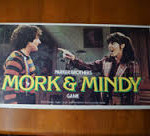San Diego Review April 1, 1996
Carrying and Planting the Seeds
By Dwayne Hunn
Maturing baby boomers… Wouldn’t be too unusual if you knew a few who dedicated their growing years to intense political involvement. It would be fairly unusual, however, to find a core of boomers who look back on years of intense work with a political leader and still carry him in the highest regard. Time, history and subsequent knowledge tarnishes traditional political giants.
Ed Koupal, People’s Lobby founder, was not traditional, and time hasn’t tarnished the memories of those who worked with or learned about him.
Koupal believed in the initiative so deeply that 20 years ago he convinced two boomers to take the seeds he sowed in their heads onto an old yellow school bus and plant them along the back roads of America until they sprouted in a Senate Judiciary hearing room.
Author David Schmidt, whose Citizen Lawmakers, The Ballot Initiative Revolution, this year went into its second printing, studied and learned about the Koupals’ People’s Lobby by living with initiative gardeners John Forester and Roger Telschow. “Roger and John were constantly telling stories about Ed. Referring to him as a genius who knew how to put politicians on the run… Ed was the center piece of the book. It started with the conclusion that Ed and Joyce Koupal and the Lobby revived the initiative process and supported that conclusion with lots of evidence.”
A book can tell you some of a man’s deeds, but working next to him increases the odds that his green thumb or magic madness might rub off. John Forester is a broker now where he “must stay up on current affairs,” reading at least three newspapers a day. It’s a habit he watched Ed and Joyce practice daily, one that rubbed off. “My People’s Lobby training and thinking is still the same. I’m still a Koupal guerrilaist, “ Forester says in broker’s gear..
John isn’t as political as he and Roger were yellow bussing through the states and setting in motion the 1977 Senate Judiciary hearing on implementing a National Initiative. But he still enjoys dispensing “Koupalisms” learned during People’s Lobby crusades. Weeks ago a Coloradan called, frantically explaining how some of his state legislators were, “Trying to take the initiative away. Trying to make it so the only way an initiative can pass is with a super majority vote, like 75%.”
John rattled off how they might organize political opposition, including reaping high praise upon the Anti-Initiative Legislators. “Maybe announce that since they are such great legislators, your people will be proposing that they need a 75% majority for re-election. Legislators as outstanding as they are should have no objection to seeking election under that process. ”
“You know,” John continued, “I was just using Ed’s philosophy that people have total power. These guys are nothing. I just did what Ed would do. I just figured how to cut them down to size, which is what Ed taught us, isn’t it?”
As a District of Columbia resident, John may soon plug into an initiative campaign with more than just phone advice. In the 70’s Roger and John spent 18 months amending the Washington DC home rule charter and passing the bill that established their Initiative, Referendum and Recall process. Now as poverty and crime pregnant DC flounders along without the right to choose a federal representative, and the Federal Control Board administers the bankrupt city, Republicans and Democrats offer proposals ranging from spending less to making DC a tax free zone.
John and some boomers think DC’s best choice is aborting the District and returning it to Maryland. Will Congress propose that? If not, these boomers may soon birth an initiative delivering DC citizens choice — thanks to the initiative of a one-time used car salesman and jazz band leader who had two boomers carry initiative seeds east to someday give the nation direct choice.

